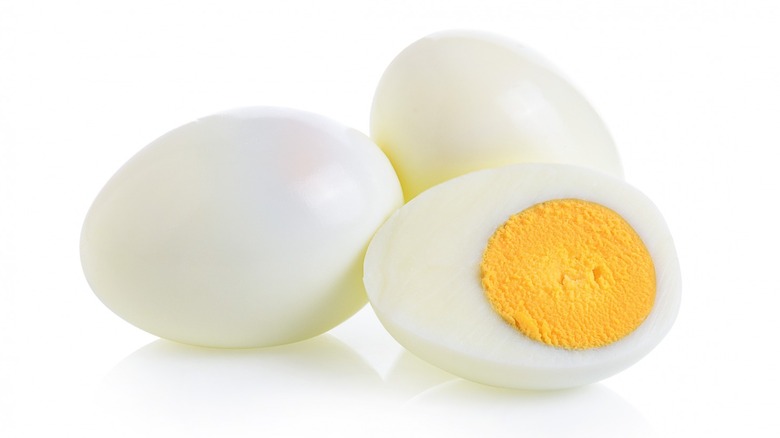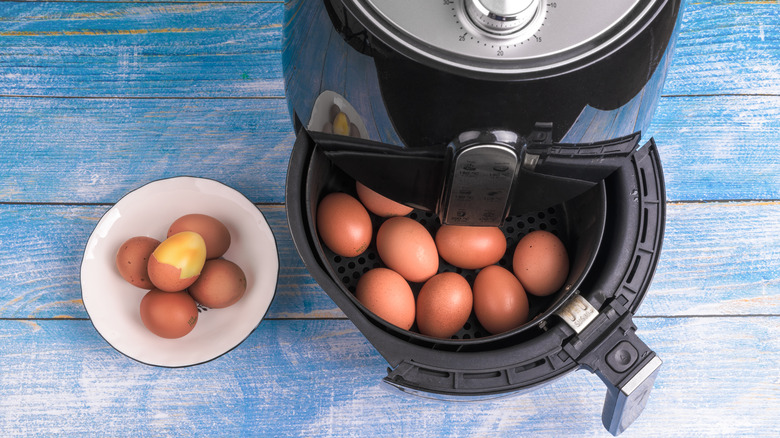What Happens When You Hard Boil Eggs In The Air Fryer
One downside to hard boiled eggs is that the shells can latch onto the flesh of the egg, leaving behind an unflattering and jagged result. While there are tons of tricks out there to ensure you get an easy-to-peel boiled egg, air frying is the best method that guarantees a fully cooked product and easy-to-remove shell. It's also great especially since the compact kitchen appliance can carry a number of eggs all at once. Plus, you don't need to worry about water, vinegar, or timing the boiling.
Just prepare your air fryer by preheating it to 250 degrees Fahrenheit for a few minutes. You could also skip this preheating step entirely and keep the eggs in for a little longer. Once the fryer is nice and toasty, place eggs in the fryer upright, using the little holes and gaps to keep them steady. Set the air fryer cooking time anywhere from 13 to 17 minutes. A shorter cooking time will yield a jammier, soft-boiled egg yolk if that's what you're after. If you want a well-done egg, aim for 17 minutes and your egg yolk will come out chalky, which is the perfect doneness for an egg salad.
How air frying makes peeling easier
An air fryer is essentially a miniature convection oven where the air circulates quickly to keep the entire environment hot. If you're hard-boiling eggs straight from the fridge, they need to be placed in hot environments for optimal cooking. When you put an egg in a preheated air fryer, the outer layer cooks and firms up so that the thin film of protein separates from the egg white. On the other hand, if you cook your eggs slowly or start off in a colder environment, like room temperature water, the egg whites will cling to the outer membrane, making peeling much more difficult.
Cooking eggs in the air fryer is only half the work, though — you should submerge your eggs in an ice water bath after. This step accomplishes two things: It stops them from cooking and firms up the egg whites for easier peeling. By shocking the eggs, the egg whites will contract and pull inward into themselves and the outer layer then becomes less attached so that it comes off effortlessly and smoothly.

